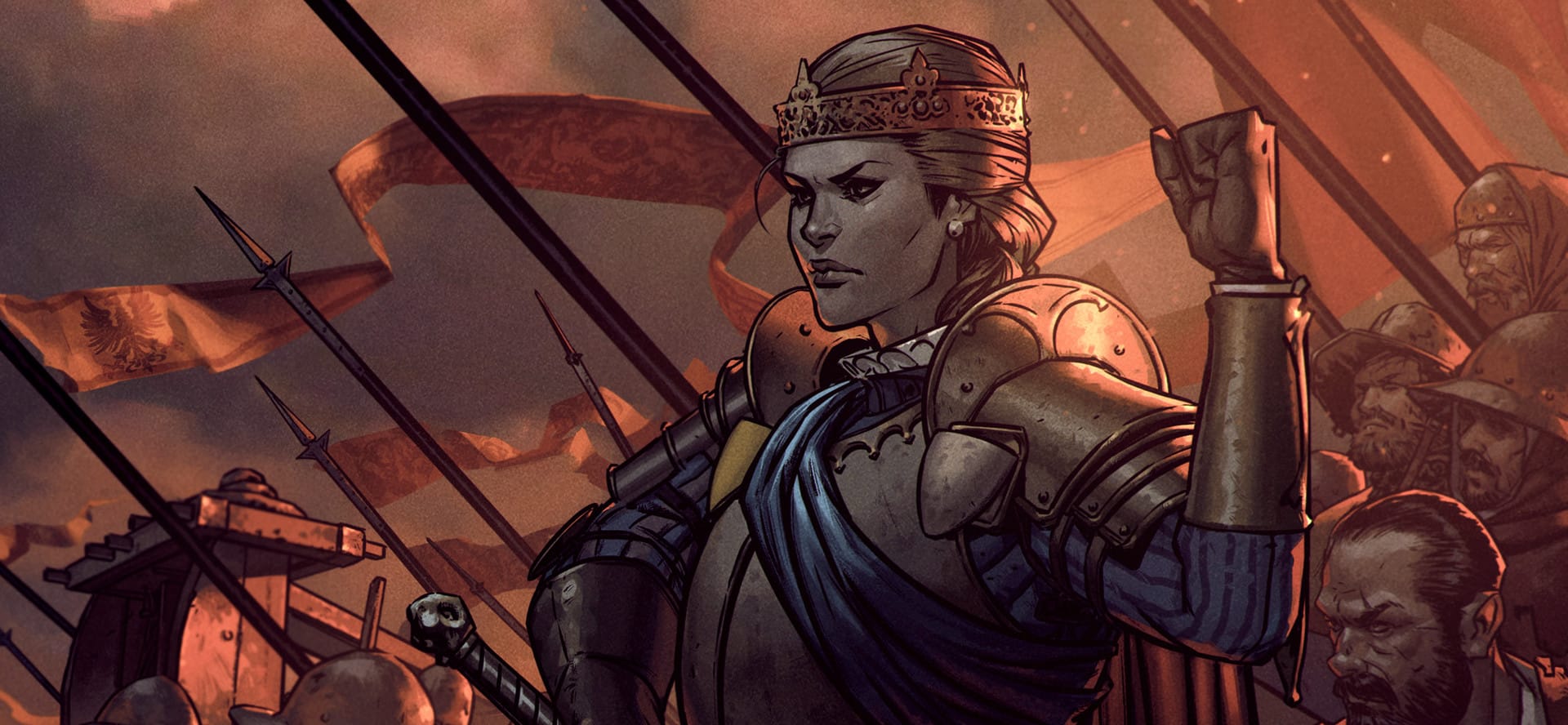Hey guys, SirLoathing here. Let's go ahead take a closer look at Hugebert Meve together. This deck has proven to be one of the strongest Northern Realms decks this season. When Crimson Curse releases, players will experiment with new archetypes. Meve Hugebert looks to be well positioned against many of the revealed Crimson Curse strategies. Meve's Leader ability provides resistance to Deathblow and NR engines outvalue the engines that have been spoiled at the moment of me writing this article. There are also new engines that bolster our Hugebert even further beyond.
Meve Hugebert wants to win Round 1 early and decisively to secure not only a long Round 3, but most importantly the last say. This allows you to play Hugebert as your secure finisher. You can often make a massive play worth over 40 points on your last turn in Round 3. This is accomplished by combining units with Damage Orders and Hugebert.
When you play your first engine, your opponent has the option of removing it or ignoring it. If your opponent starts playing gold removal early, don't fret. This makes it difficult for them to win Round 3. A Morvran player who wastes their Auckes and Serrit in Round 1 on Lyrian Arbalest or Kaedweni Revenant may steal the round from you, but that means they most likely won't be able to stop your Gold engines in Rounds 2 and 3.
If your opponent ignores your early engines, start racking up points quickly and create a large enough gap that you can pass. When deciding how many points are necessary to pass safely, there isn't a perfect formula. In general, consider what your opponent’s largest possible play is.
It's okay to lose Round 1 if the opponent overextends. For example; a Brouver player who decided to waste multiple Leader charges in Round 1.
Although you want to save your best engines for Round 3, it's often fine to burn some number of Gold engines to get ahead. You don’t want to be in a position where your Bronze engines couldn’t create a gap and then you have to invest Gold engines to get another turn of activations.
Botchling, Anna and Sabrina are acceptable cards to use to win Round 1. Ocvist has become the engine I am very unlikely to burn in Round 1. The exception is if the round goes to Turn 8+ and I am against a deck that I believe I have to win Round 1 to win the game, such as Gernichora.
If you’ve won Round 1, it's almost always correct to drypass Round 2 and prepare for a long Round 3. If you won Round 1 and still have thinning cards in hand (Witchers or Blue Stripes) it's sometimes correct to play a short Round 2 with the goal of thinning. You want to thin in Round 2 when your hand is weak and you’ll have to take multiple mulligans to fish for better cards. It's obviously never acceptable to go down a card.
If you lost Round 1 and your opponent overextended to take it, prepare yourself to be pushed. When I expect to be pushed in Round 2, I try to either save my Witchers for Round 2, or start the round off with a strong engine. After losing the first round, it's generally correct to play your Hugebert in Round 2. Without last say, he will likely just die to tall removal. Don’t play Hugebert directly into cards such as Peter. Try to track the distance between you and your opponent’s last play when you are behind in points. Keep that distance within the reach of your Hugebert burst.
I am going to write this section as if you won Round 1. Your goal in Round 3 is to stick as many engines as possible without using their Orders. You can combine them with Hugebert's Deploy ability during your last turn. It may be tempting to activate your Arbalest or Seltkirk when they miraculously survive, but preserving them for Hugebert doubles the points. The real sign that you’ve mastered the deck is discovering when you can float Vincent or Sabrina to the last turn, as both are fragile. Learning to predict removal is crucial. It requires knowledge of the meta.
The most important skill when playing Meve Hugebert is being able to predict your opponent’s removal and finding an opening for your engines. Meve’s Leader ability aids you greatly. You want to use it to tailor your board to blank specific removals from your opponent. The most basic example of this is blanking Bloodthirst 2 from an SK deck.
Most of the time, I will pick a number (3 or 4) and use Meve’s ability to avoid presenting an engine with that power for the entire game. The vast majority of meta decks have a glut of removal that deals a specific amount of damage. It's hard to read into this at first, but you'll get the hang of it. Let's compare the following two sequences as openers.
- Correct sequencing: Arbalest with Meve buff → Witchers → Revenant with Meve buff
- Incorrect sequencing: Arbelest with Meve buff → Revenant → Witchers with Meve buff
If you sequence your engines and Meve charges properly, your opponent won't be able to answer your engines with cards that deal 3 damage. Generally, this is a much better strategy than dumping your Meve charges into whatever is available. Try to stay out of reach of the common removal. If you brick cards such as Slave Driver or Pirate Captain, that’s one more engine which survives. Even that one engine slipping through the cracks can carry the entire round.
Best of luck on the climb and if you have any questions, please contact me on Discord: https://discord.gg/uSUSJZr


Leave a Reply